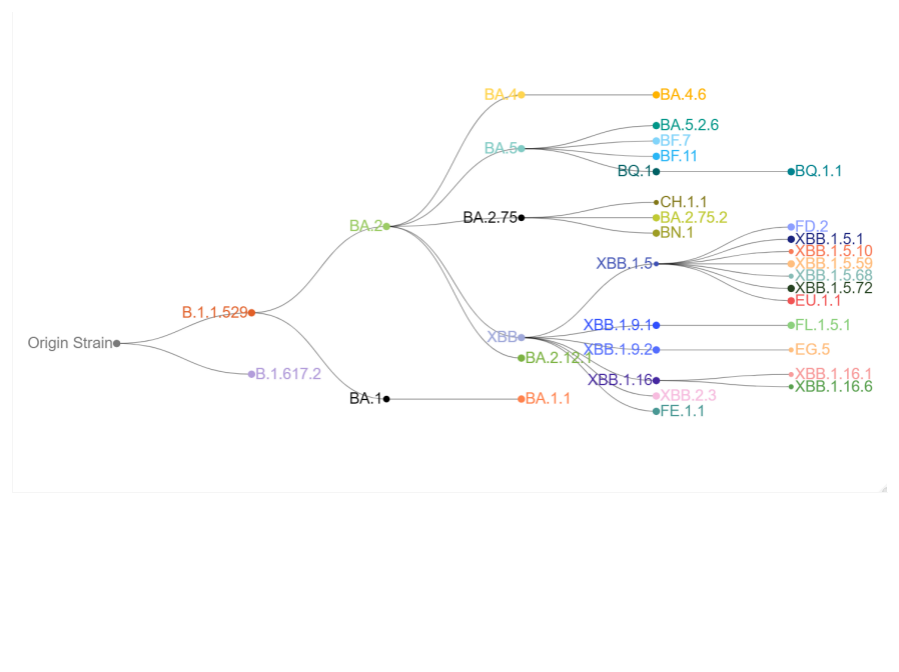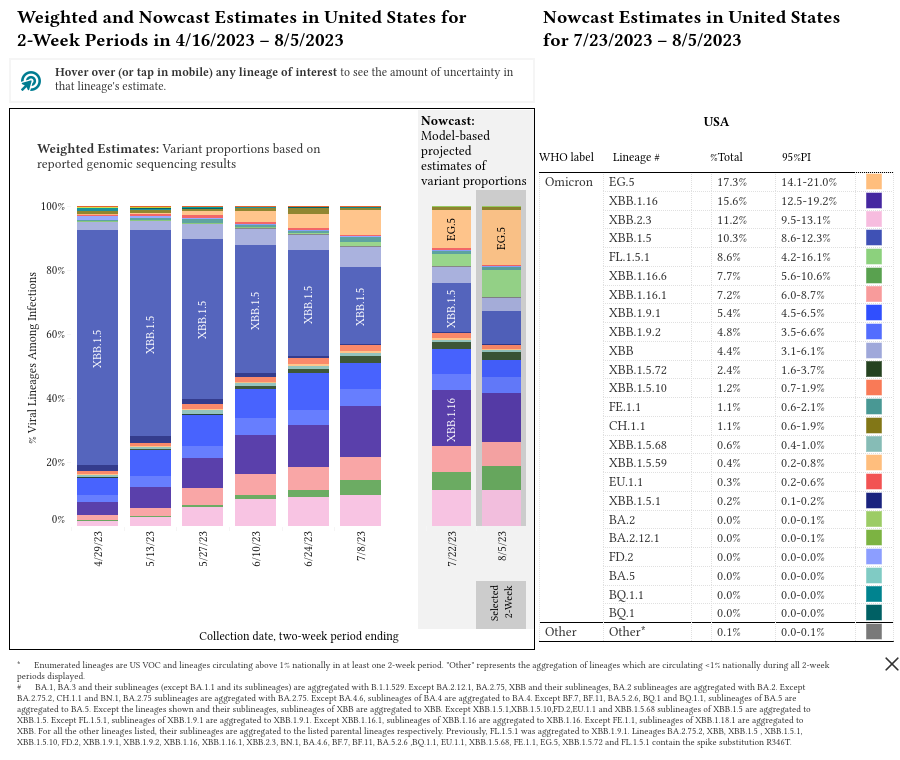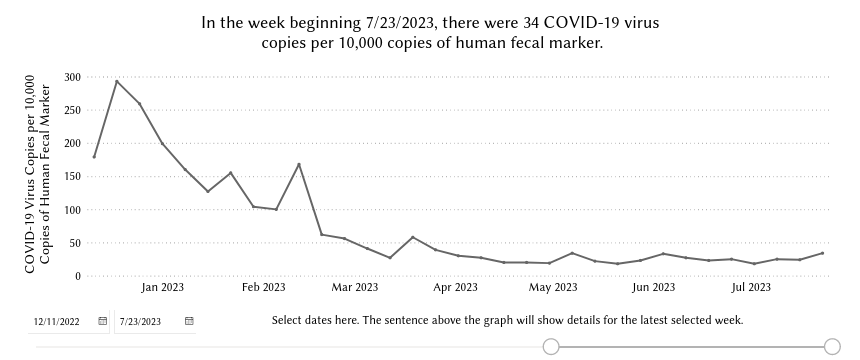A new subvariant of SARS-CoV-2, the virus that causes COVID-19, is increasing in prevalence with initial US detection primarily in the New England area. Labeled EG.5, it was discovered outside the US on Feb 17 and is a minor mutation from the XBB.1.9.2 subvariant. The entire lineage, including XBB.1.9.2, EG.5, and a further subvariant EG.5.1, is subsumed under the “Omicron” label, but EG.5 and its descendants have often been unofficially labeled “Eris” (after the ancient Greek goddess of strife and discord). Indeed, the use of the Omicron label for so wide a variety of subvariants has called into question the continuing usefulness of the label.

At this time, there is no evidence to suggest that EG.5 is more virulent than other subvariants of the Omicron group, although observed increasing prevalence suggests at least slightly increased transmissibility. It is expected that vaccines effective against the broad class of Omicron variants will continue to be effective against EG.5.
EG.5 was designated as a “variant under monitoring (VUM)” on Jul 19 by the World Health Organization (WHO). A VUM is the least serious classification assigned by WHO, after the most serious “variant of concern (VOC)” and the second most serious “variant of interest (VOI),” among the set of three. Variants are reclassified, promoted as they increase in circulation and demoted as they decease in circulation.

EG.5 has become prevalent on the United Kingdom, Israel, and other locations outside the United States. For samples collected in the US during the two-week period ending Jul 8, the Centers for Disease Control and Prevention (CDC) reports EG.5 accounted for 7.5% nationally but 15.9% in New England, although the CDC estimates it is now for the two-week period ending Aug 5 the most common subvariant nationally at 17.3%, displacing XBB.1.16 at 15.6%, XBB.2.3 at 11.2%, and XBB.1.5 at 10.3%. There is insufficient data to break out an estimate of current prevalence in New England, and the most recent public data on RI variants is from May.
While there has been a minor uptick of virus detection in wastewater samples in RI, levels have been consistently low since March and do not seem to forecast a surge in the near future. COVID-19 hospitalizations and deaths in RI have likewise been low, with 58 hospitalizations in July, down from 75 in June, and eight deaths in each of July and June.


